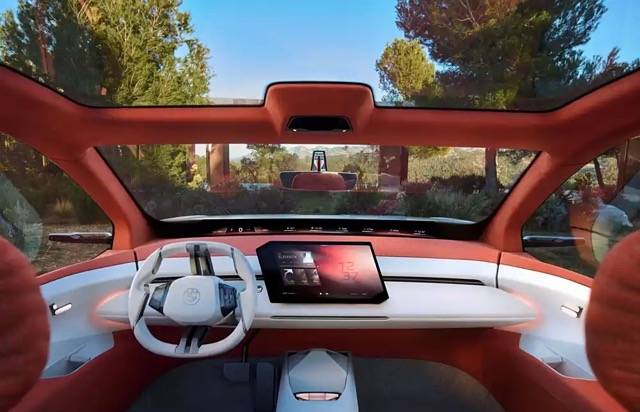BMW Joins Hands with Chinese Tech Partners to Upgrade AI and more
The official informed us on December 24 that BMW will unveil a new generation of super-sensing intelligent cockpits at the 2025 American International Consumer Electronics Show (CES) in January. These include BMW’s first panoramic iDrive and BMW’s new operating system X, which will debut alongside the first new generation SAV model in 2025 and reach Chinese consumers in 2026. In order to satisfy the interactive needs of Chinese customers in a variety of circumstances, the Chinese market version will integrate local technologies and services.
The Chinese and Munich digital R&D teams will collaborate to design the main digital experience areas of BMW’s upcoming models. These areas will include digital functions and services of the in-car ecosystem, intelligent personal assistants, navigation systems, and user interfaces. In order to improve the core user experience, including generative AI big language models, intelligent voice assistants, in-car navigation, games, and other multi-scenario digital ecosystems, BMW announced that it will collaborate and conduct research in the areas of big models, generative artificial intelligence, and intelligent voice interaction with China’s top technology partners.

By employing AI technology to facilitate intelligent human-machine interaction and providing Chinese consumers with a better, more intelligent, and more customised in-car digital experience, BMW is speeding up its digital innovation in China. BMW keeps increasing its research and development expenditure in China, a country teeming with innovative vitality in the digitalisation space. In its investigation of future travel, BMW consistently upholds the “people-oriented, intelligence-oriented, and responsibility-oriented” principle. Innovation in technology should benefit individuals, not impede their ability to drive. Technology shouldn’t be the foundation of intelligence. BMW is adamant about using technology to turn ideas and designs into distinctive goods. Innovation encompasses more than just technological advancement. BMW meets client needs by integrating all technology in its own unique way.
Officials claim that in addition to developing innovative technology, BMW is also making technology that consumers enjoy using. However, the automobile business needs a new direction; it cannot only provide cars more features, which will eventually generate problems for customers. According to BMW, advanced technology ought to be “hidden technology” and shouldn’t impede the driving experience.

The new generation is recognised as the beginning of a new BMW model series in addition to being an automobile. A new design language, new electric drive and battery technology, new electronic and electrical architecture, a new intelligent cockpit and operating system, a new driving assistance system, and a “beyond the extreme” driving pleasure experience are just a few examples of the advancements in the design, technology, and concept of the BMW brand and products that are evident in the new generation. BMW’s revolutionary innovation in intelligent digitalisation and human-computer interaction is embodied in the current generation of vehicles.
In order to enhance the intelligent digital experience and pure driving pleasure, BMW’s upcoming models will feature a new electronic and electrical architecture that includes four “super brains” (domain controllers). Additionally, the vehicle’s overall computing power will be significantly increased.
The AI-driven system will greatly enhance the smart cockpit’s information retrieval and system response capabilities by utilising a vast knowledge base, intent understanding, and logical reasoning capabilities. BMW will employ a modular strategy as part of this collaboration to increase the smart cockpit system’s response time and accomplish effective function calls. In order to satisfy a variety of consumer demands and offer a more intelligent in-car digital experience, it will broaden the intelligent application scenarios in the areas of voice, navigation, entertainment, and information.
The BMW Intelligent Personal Assistant can now converse in natural language and learn on its own thanks to BMW’s collaboration with Chinese tech firms to improve voice engine technology. This allows drivers and passengers to communicate naturally and intuitively without the need for wake-up words. With the use of generative AI, it can better understand user demands, give proactive recommendations and act at crucial times, respond more intelligently to enquiries about cars and brands, and help with function execution. In addition, the BMW Intelligent Personal Assistant has a rich local knowledge base and a distinctive brand-specific voice tailored for Chinese users. It supports voice search for popular content, navigation, flight, and stock enquiries, and users can customise the assistant’s features and interactive experience.
